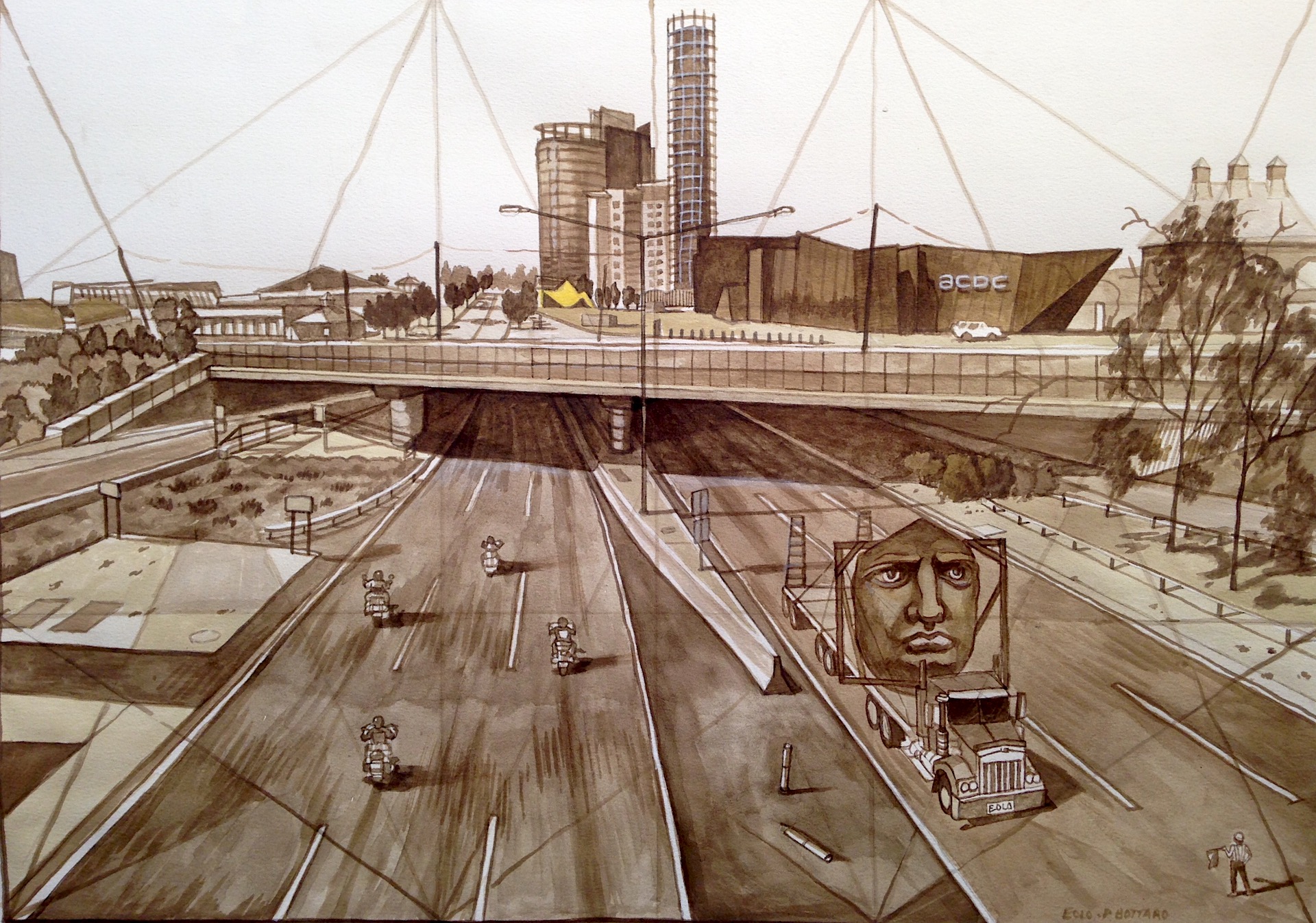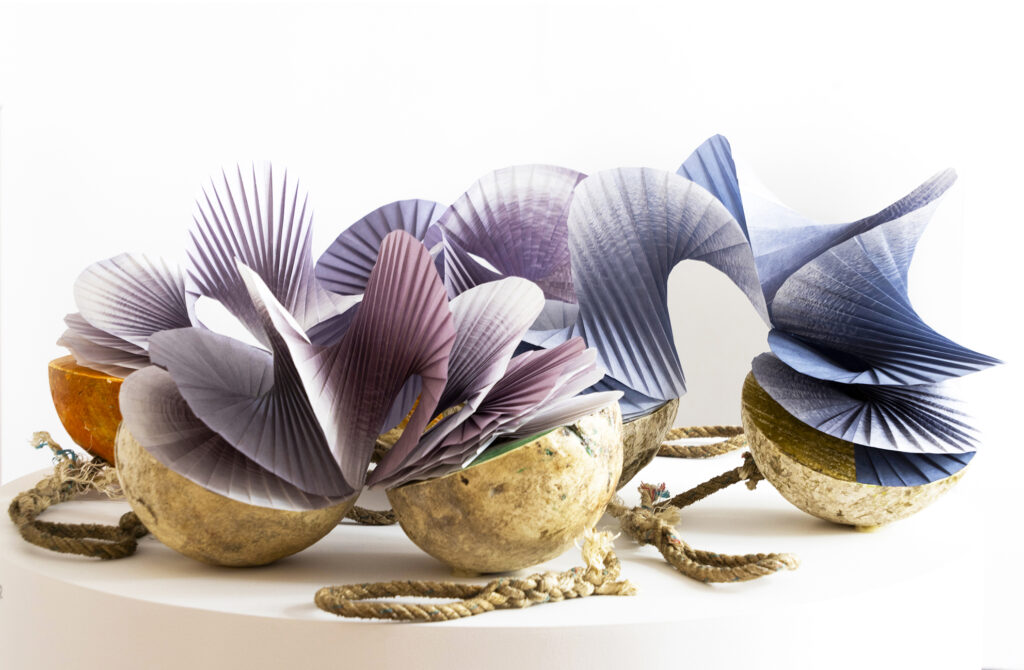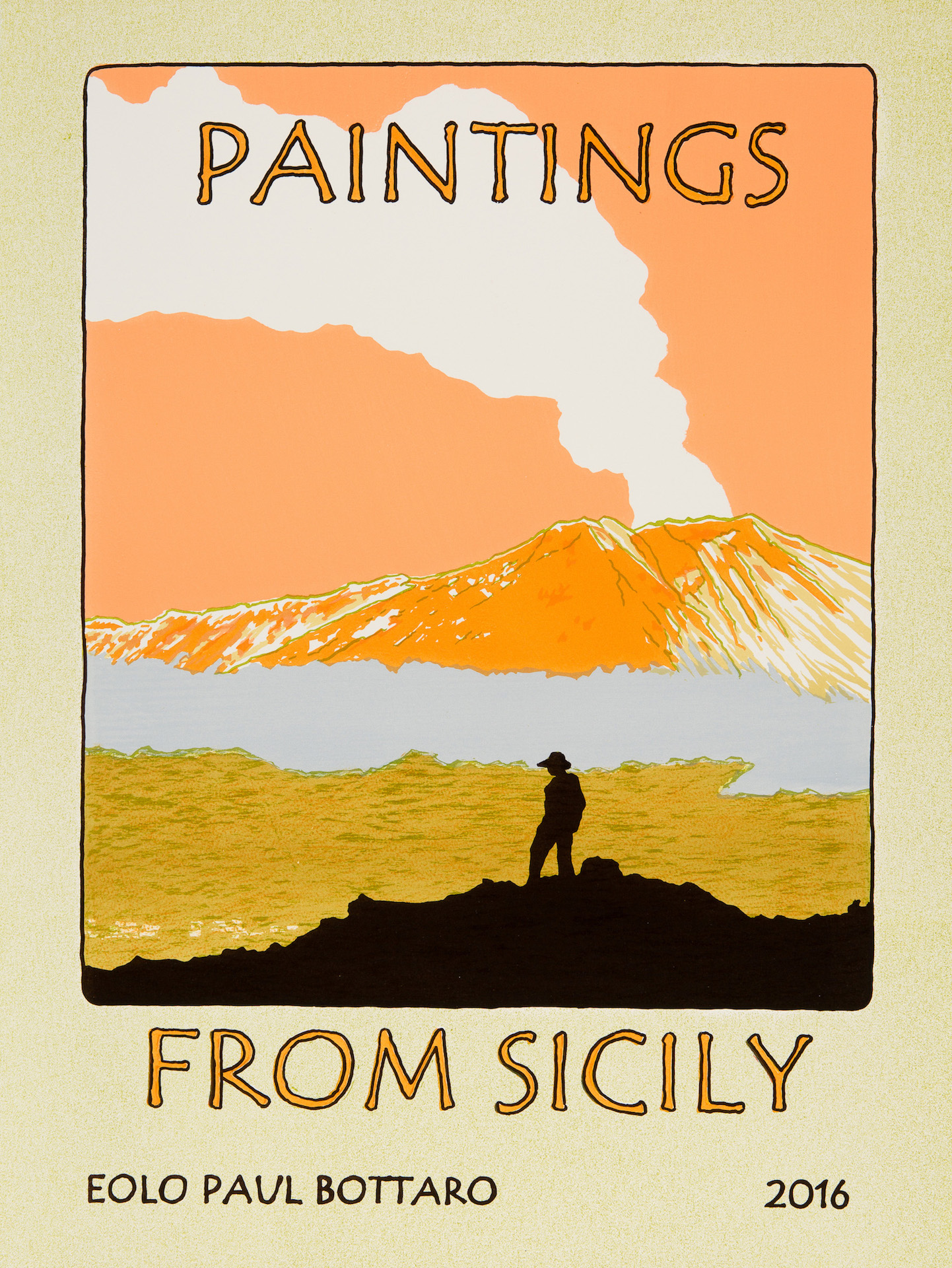
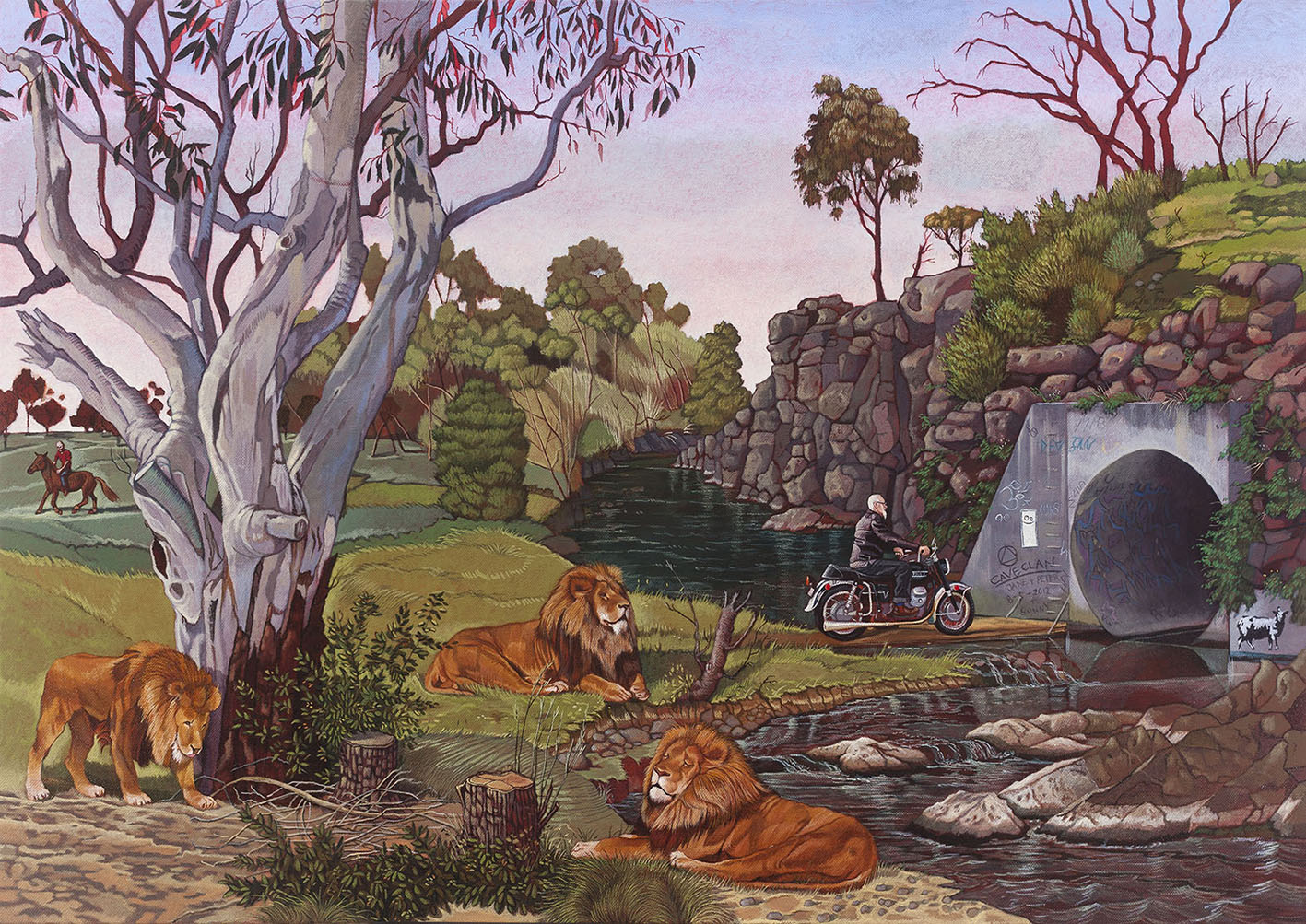
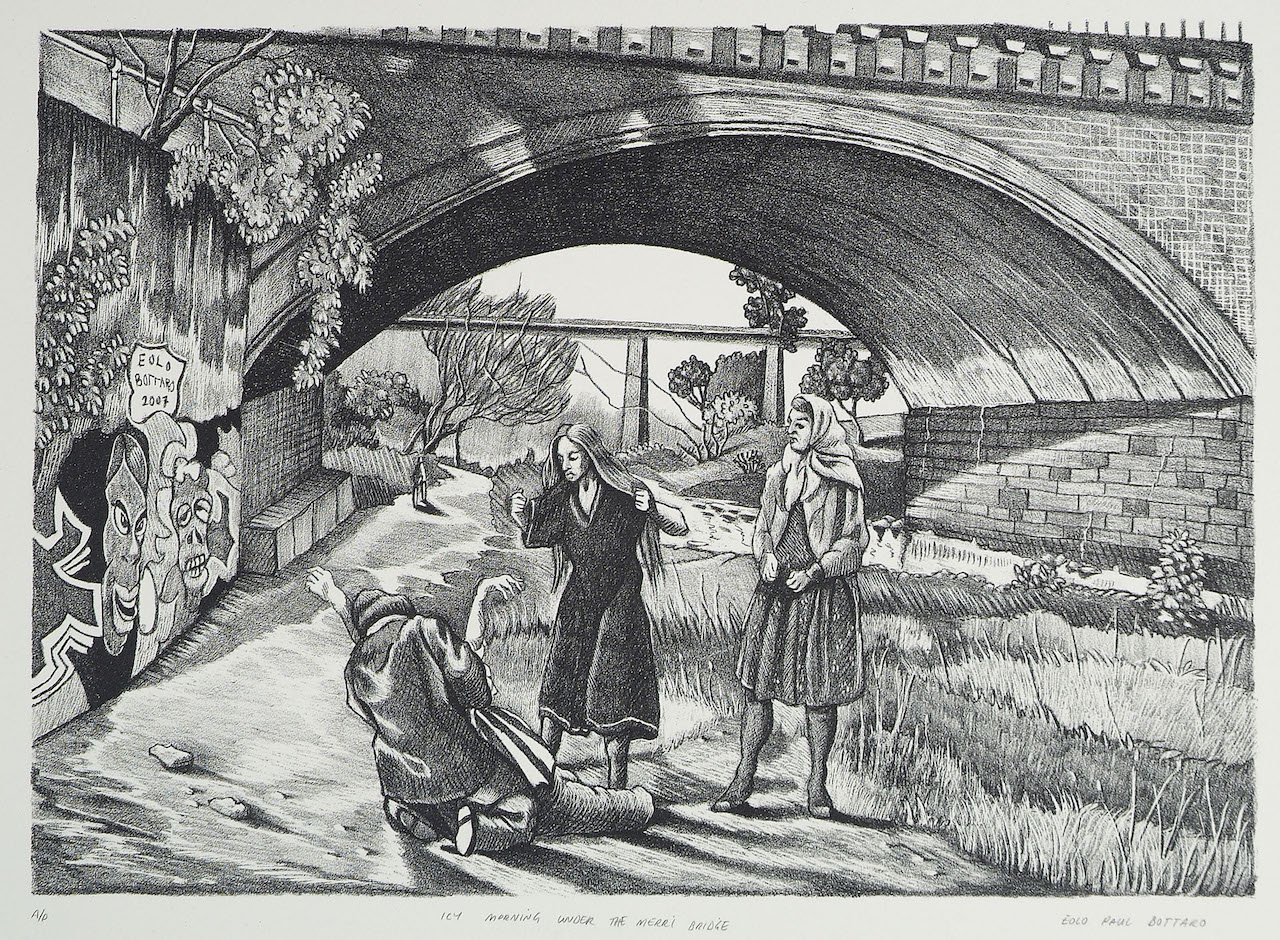
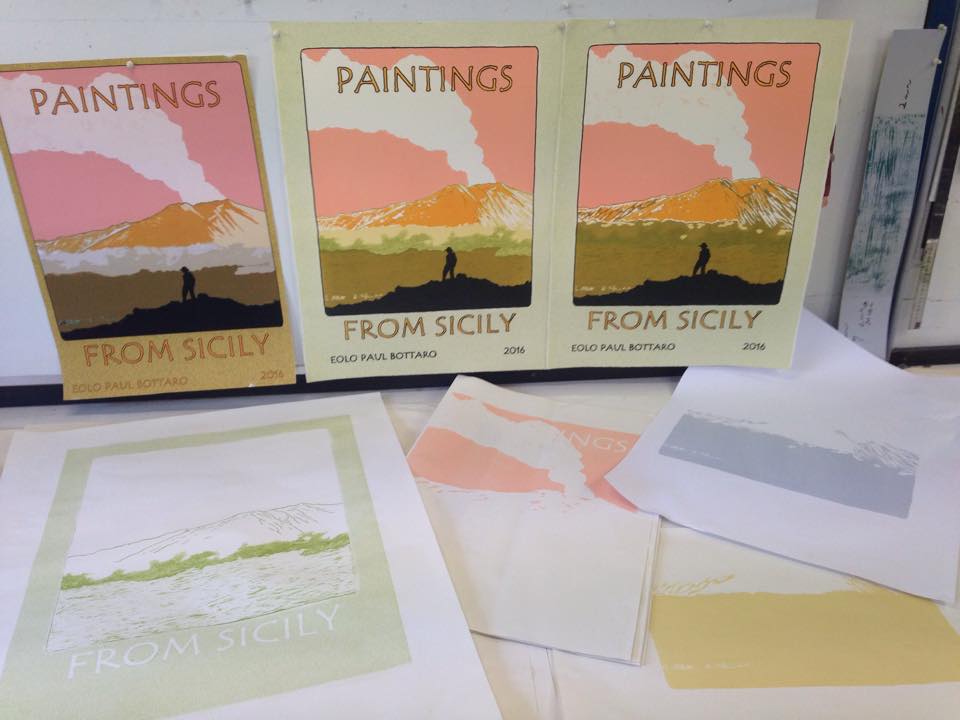
From top:
Eolo Paul Bottaro:
Highway to hell, 2016, shellac based ink on paper, 47 x 66 cm
Painting from Sicily, 2016, lithograph, ed of 15, 76 x 56 cm. Printed by Peter Lancaster.
A Lion Doesn’t Lose Sleep over the Opinion of Sheep, 2013, oil and egg tempera on linen, 148 x 212 cm
Icy morning under the Merri Bridge, 2008, lithograph, edition of 15, 27.5 x 38.5 cm. Printed by Peter Lancaster.
Q: What were some of the foundation ideas for this exhibition project?
A: My intention for this exhibition was to correlate works including graphics, oil paintings and sculpture which represent my practice over the last 20 years. The show comprises an eclectic collection of imagery across these mediums ranging from figure groups, landscapes and portraiture. The graphic part of the exhibition concentrates on previously unseen sketches connected to large multi-figure paintings; and a large group of prints made in collaboration with Lancaster Press. I have always enjoyed seeing the relationship between lithography and oil painting displayed in my exhibitions. The prints and drawings are an effective way to work out aspects of a composition before the painting takes place and these mediums have such different expressive possibilities to painting. I have included a strong presence of graphics in all my exhibitions dating back to 2004.
Q: How did the artwork selection take place?
A: The selection of artworks for this exhibition ‘The Artist’s Studio’ began with a reverse approach. That being, looking at present practice which is predominantly sculptural and working my way back to earlier more elaborately compositional work, created on paper and in oils. Several of the major works have come from private collections. The difficulty of this curatorial aspect of the exhibition was creating the coherent dialogue between the creation of the artworks. The key to this is found in the graphic aspect of this show which binds it all together.
Q: How does the exhibition manifest – what do visitors experience?
A: The viewer is initially greeted with a colourful, baroque palette and is then invited to delve deeper into the individual narrative which each work contains. I like to create imagery that combines mythology and urban life and will often source ancient stories from art history to express something about contemporary life. I like the idea of creating a narrative journey in the pictures where the viewer is invited to decode the meaning. It’s all open ended and I avoid spelling things out in terms of the narrative. That way the viewer creates their own meaning when looking at the works.
Q: What are some of the key works and what subject matter do they deal with?
A: Some of the key works included in this collection are; Leucophia, 333 Collins Street, and A Lion Doesn’t Lose Sleep Over The Opinion Of Sheep. The subject matter is diverse and I avoid repetition. Cultural history plays a very important part in this exhibition. This history manifests itself in a contemporary context/setting, especially the suburbs of Melbourne where I have grown up, as well as the landscapes of my region of heritage, Sicily, Italy.
One of the major works in the show is A lion doesn’t lose sleep over the opinion of sheep. This painting is based on a woodcut by Renaissance master Tiziano Vecelli (1488/90 – 1576), attributed to block-cutter Niccolò Boldrini (active ca. 1530 – ca. 1570). The print depicts the biblical figure of Saint Jerome and his self-imposed exile in the wilderness to purify his soul. I first came across it in the Ursula Hoff Print Room at the NGV and was intrigued by the composition and its representation of an individual’s existential journey to confront the unknown. In a painting on the composition and theme I have refigured the saint as a motorcyclist entering a stormwater drain tunnel surrounded by large lions as depicted in the print. The scene is set on the banks of Melbourne’s Merri Creek, a prominent waterway that runs through the north of the city.
Q: What is it about the printmaking experience that you most appreciate?
A: I’m attracted to printmaking as a means express the collaborative experience which is shared between the creator and the printmaker. I find that the deconstruction of an image based on positive and negative space, and then its reconstruction a liberating way to understand the visual dynamics of perception. As a colour theorist I am attracted to the purity of the printing process where colour is superimposed in order to create form and tonal hues. Obviously, the playfulness of the almost infinite applications used to create a mark are endlessly engaging.
Eolo Paul Bottaro: The Artist’s Studio is at Metro Gallery from until 20 November www.metrogallery.com.au
—
Join the PCA and become a member. You’ll get the fine-art quarterly print magazine Imprint, free promotion of your exhibitions, discounts on art materials and a range of other exclusive benefits.

